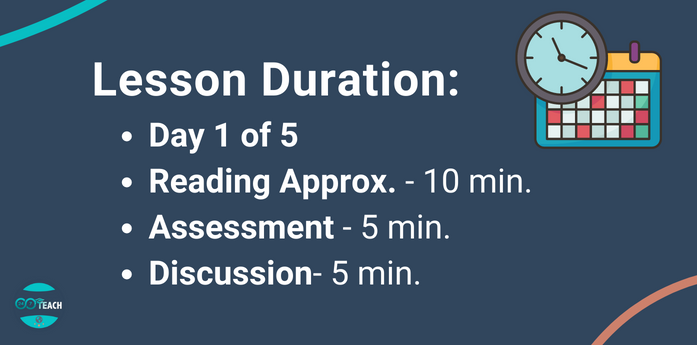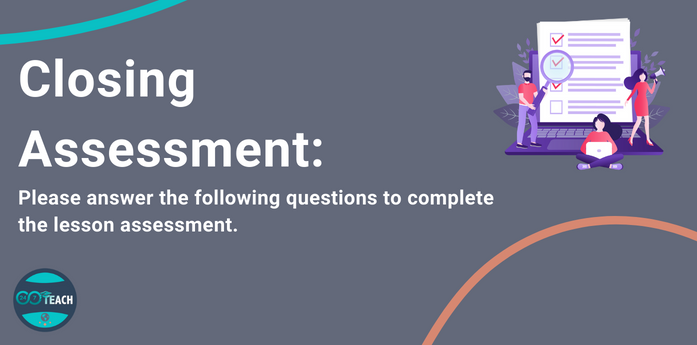Lesson 1: Introduction to Instructional Design
Prefer to listen to this lesson? Click below:
Workshop Scenario:
Please think of yourself in the following scenario as you complete this workshop.
You’ve recently applied for an instructional design position with 24/7 Teach and are going through the interview process. The organization likes you and is moving forward in the interview process.
- Before an offer can be made, the company will need you to design a project, a short lesson that can teach people about the instructional design process and its importance, to evaluate your skill level.
- To complete the project, you will need to go through the entire instructional design process from beginning to end, complete your design, and be able to explain your design process in detail.

Your objective for today is to understand what Instructional Design, Education Technology, and Learning Experience Design are and what professionals in those fields do.
Important Questions to Answer While Reading:
In order to be successful in this lesson, you must be able to answer these important questions.
- What is Instructional Design, and how is it different from Educational Technology, and Learner Experience Design?
- What is the difference between instructional technology and educational technology? Is there any overlap between the two?
- Who does Learning Experience design focus on the most versus instructional design?

Lesson 1: What are Instructional Design, Education Technology, and Learner Experience Design?
What is Instructional Design?

Instructional Design, also known as instructional systems design, is the analysis of learning needs and systematic development of instruction. Instructional designers often use Instructional technology as a method for developing instruction. Instructional design models typically specify a method that, if followed, will facilitate the transfer of knowledge, skills, and attitude to the recipient or acquirer of the instruction.
Instructional Design is also the systematic development of instructional specifications using learning and instructional theory to ensure the quality of instruction. It is the entire process of analyzing learning needs and goals and developing a delivery system to meet those needs. It includes the development of instructional materials and activities; and tryout and evaluation of all instruction and learner activities.”
What is an Instructional Designer, and what do they do?
An instructional Designer is an individual who develops the methodology and delivery systems for presenting course content.
- Instructional designers create and deliver learning products for businesses, K-12, higher education, and gov. organizations.

Instructional designers are the ‘architects‘ of the learning experience and the ‘directors’ of the Instructional Systems Design (ISD) process. Instructional designers are in high demand worldwide (particularly in North America, Asia, and Europe), as organizations are turning towards instructional designers to solve business performance problems through the delivery of effective learning experiences.
What are Educational Technology and Instructional Technology?

Educational technology, sometimes termed EdTech, is the study and ethical practice of facilitating e-learning, which is the learning and improving performance by creating, using and managing appropriate technological processes and resources.
The term educational technology is often associated with and encompasses instructional theory and learning theory. While instructional technology is the theory and practice of design, development, utilization, management, and evaluation of processes and resources for learning, according to the Association for Educational Communications and Technology (AECT).
Educational technology includes other systems used in the process of developing human capability, but is not limited to, software, hardware, as well as Internet applications, such as wiki’s and blogs, and activities.
What is an Educational Technologist, and what do they do?
An educational technologist is someone who is trained in the field of educational technology. Educational technologists try to analyze, design, develop, implement and evaluate processes and tools to enhance learning.
The role of the Educational Technologist was developed because, as online technologies have exploded into mainstream education and corporate training, the need for professionals who are highly qualified in designing, developing, implementing, and assessing instruction has increased.
However, the roles and responsibilities of educational technologists have become as varied as the employers who hire them and the tools they use. In order to shed some light on the matter, 161 EdTech professionals were surveyed in order to define the role(s) they play in K-12, higher education, corporate, and government work environments.”
What is an Instructional Technologist, and what do they do?

An instructional technologist is, first and foremost, a trainer. They use their research and wealth of knowledge in a specific curriculum to develop training and materials for teachers and education systems. Their work can be in development and in assessment, as they sometimes audit school systems to ensure federal and state education standards are being met.
Instructional technologists also collaborate with instructors and instructional designers to identify the best uses for technology in instruction, considering many factors, including cost, usability, security, accessibility, and ability to meet specific learning or teaching goals.
Instructional Technologist also does the following:
- Evaluate new technologies to discover new and better ways to enhance instruction
- Assist faculty in discovering methods of improving their instruction with and without technology
- Conduct training sessions teaching faculty and staff how to use new technologies
- Conduct research studies evaluating the use of technologies and their impact on student learning outcomes
- Create training materials to accommodate the self-learners and provide resources for our “customers”
- Manage the implementation of new technologies on-campus for the use of instruction.

What is Learning Experience (LX)
“Learning experience design (LX design) is the process of creating learning experiences that enable the learner to achieve the desired learning outcome in a human-centered and goal-oriented way.”
LXD position is not only likened to Instructional Designer in constructing lessons, but it also entails expertise similar to a SME and research and analysis similar to a Data Analyst.
Learning experience (LX) design is rooted in a combination of several design disciplines in the field of learning. Key design principles used in LXD come from interaction design, user experience design, experience design, graphic design, and game design. These design principles are combined with elements of education, training and development, instructional design, cognitive psychology, experiential learning, educational sciences, and neuroscience.

LX design is about learning and not so much about teaching, instruction, or training. The focus is where it should be: on the learner and the process that the learner goes through. You definitely have to understand why and how people learn in order to be effective. Experiential learning, in particular, is part of the foundation of LX design. As stated in the definition of LXD, you want to design a learning experience that enables the learner to reach the desired learning outcome. But how do you do that? By making the experience human-centered and goal-oriented.
Sometimes LX design is confused with instructional design. On the surface, there are similarities, but when you look closer, they are fundamentally different regards to their origin, perspective, methods, skills, and tools.
“An emerging discipline, learning experience design (LX) draws from other disciplines including experiential learning, cognitive psychology, interaction design, user experience design, instructional design and design thinking.”
“Learning Experience Design™ (LX or LX Design)—a synthesis of instructional design, educational pedagogy, neuroscience, social sciences, design thinking, and UI/UX—is critical for any organization looking to compete in the modern educational marketplace.”

Closing Assessment:
Please respond to the lesson email with answers to the following questions, and one of our instructional design mentors will respond with feedback.
- What is Instructional Design and how is it different from Educational Technology, and Learner Experience Design?
- What is the difference between instructional technology and educational technology? Is there any overlap between the two?
- Who does Learning Experience design focus on the most?

Advance your understanding by participating in the 24/7 Discussion Forum:
1. Please answer the following questions in the comment section below and interact with learners from around the world.
- If you were offered a position and you had to choose between being an instructional designer, an instructional technologist, or a learning experience designer, which would you choose and why?
- What would be your second and third choices, and why?
2. Please read and reply to other learners’ answers in the forum by stating if you agree or disagree with their answers and why. Your replies should offer new substantiated ideas or thoughtful questions.

